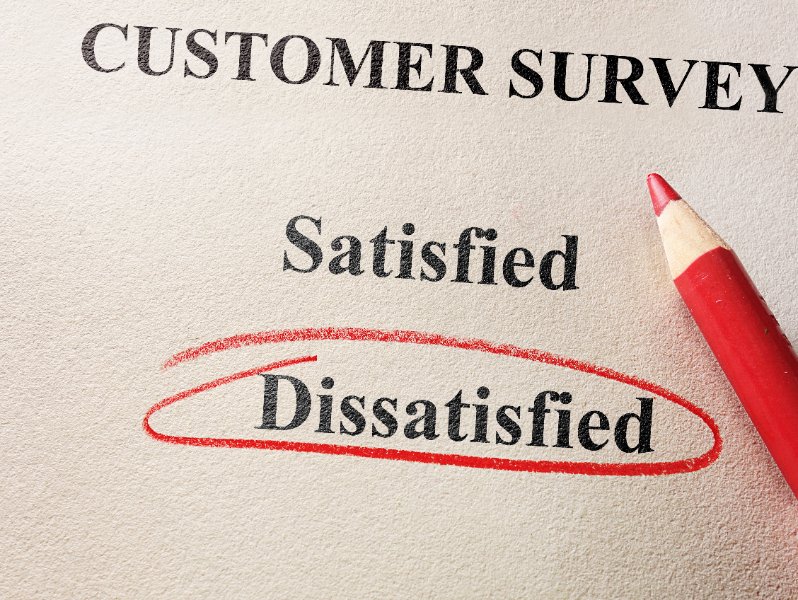Negative reviews are inevitable. With today’s widespread and fast-paced online connectivity, it’s easier than ever for customers to voice their opinions about experiences with businesses. When customers are happy and share their thoughts online, it can lead to a deeper understanding of your customer and word-of-mouth marketing that drives new, relevant prospects to your door. But when customers are displeased, their bad reviews can turn potential customers away and can have a long-lasting impact on a business.
Statistics show that 92 percent of B2B buyers are more likely to purchase after reading a trusted review. While companies can gather testimonials and create case studies to showcase how their business addresses customer challenges, unsolicited reviews remain popular for their candid and honest nature. Social media and third-party review websites are popular hubs for B2B buyers to articulate their experiences. This doesn’t mean the brand should stay out of the conversation. In fact, if you’re not responding to comments and reviews, especially negative ones, you’re missing out on a vital opportunity to manage your brand reputation, learn more about your target audiences and foster lasting customer relationships.
How to Respond to Negative Reviews and Comments

When negative reviews and comments go unanswered, brand reputation can be damaged. Whether communicating online or directly with a company, clients appreciate when they are listened to, especially in a situation where they’re left unsatisfied. Other prospects notice when a brand actively responds to and addresses customer concerns. If someone posts an unfavorable review or comment about your company, take these five steps to transform negative comments into a positive experience:
- Respond quickly and respectfully. Time is of the essence when a customer posts a negative review or comment. It’s important to have someone on deck who quickly addresses comments on your website, social media, earned media, third-party review sites and other platforms where your brand is visible. Social listening tools such as Brandwatch or Buzzsumo can discover brand mentions and notify the appropriate parties. Wherever a comment arises, respond right away. First, thank the person for taking the time to review. A brief, empathetic and respectful response shows customers the company takes the problem seriously and initiates the process of solving their issues.
- Take the conversation offline. It’s essential to communicate the next steps in the initial response to the client or prospect. Whether you suggest a direct message, phone call or email, give customers a way to connect further with your brand. Move the conversation away from public forums and direct the client to the appropriate contact as efficiently as possible.
- Consider the situation from the client’s point of view. The client is your best resource for understanding the situation and how to make improvements. After initiating the opportunity to speak to the client, listen first. Seek to understand their perspective and experience before making explanations or presenting a solution. The client’s perspective is essential to discovering what action to take to solve their problem or improve their experience, both immediately and in the future.
- Assess the comment and the context. Before taking any action to address the issue, get a clear understanding of the situation without getting defensive. Read the comment carefully and, when possible, gather additional information about the client relationship from employees or CRM records. In cases when the comment has little context, is blatantly offensive or even false, tact is still important. Regardless of the situation, remain professional, apologize and ask the customer how you can resolve the issue together.
- Take action. While it’s important to use negative comments to identify and solve issues, actions speak louder than words. This might be as simple as replacing a defective product. Or it might be as complex as reassigning the personnel assigned to a large client project. Be creative and innovative. Think outside the box. Communicate the measures that will be taken and be open to customer feedback. Document these processes and ensure solutions are applied beyond the one circumstance to instigate improvements in future customer relationships.
An Underestimated Resource

Negative comments and reviews might seem like a cause for panic, but misunderstandings happen. Everyone makes mistakes. When handled well, negative feedback serves as a vital opportunity to understand client experiences and identify where good intentions have gone astray. When handled effectively, the circumstance can help boost client retention and loyalty. Additionally, negative and constructive feedback offers an opportunity to develop better products, messaging, client services, user experience and business operations. With a system in place to professionally respond to and address clients’ comments, you can establish your brand as a reputable and respected source in your field.
